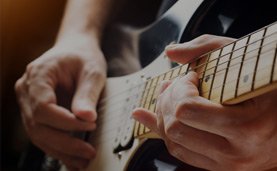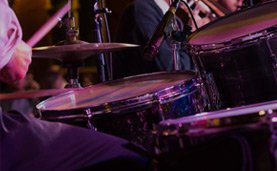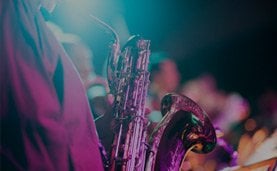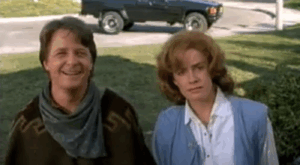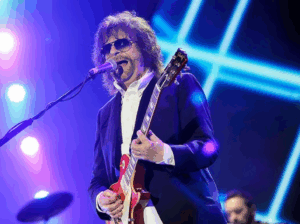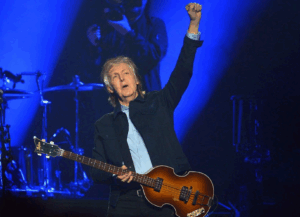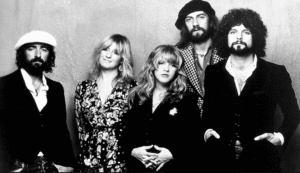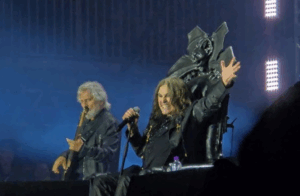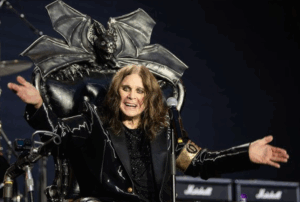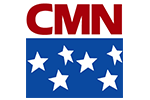20 Revolutionary Protest Songs That Changed History
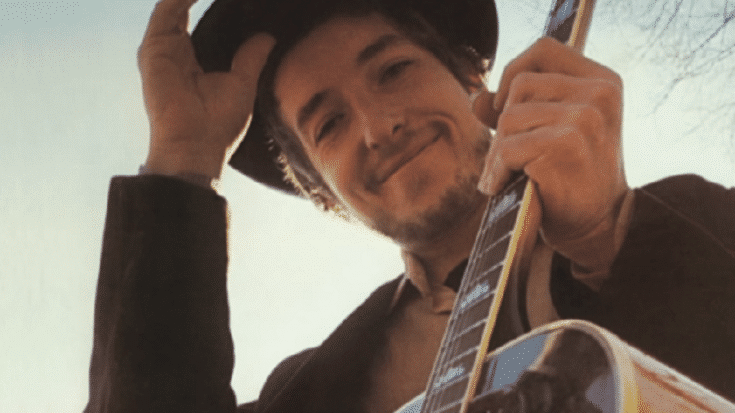
via Bob Dylan/YouTube
Songs don’t need to be popular to matter. But, as we’ll see in the following list of 20 Protest Songs That Changed History, they often are.
Regular folks in America have taken up anthems that talk about new or initially unpopular ideas, turning them into rallying cries against things like war and racism. Sometimes, these songs become linked with their specific time, closely tied to the fight for peace, justice, and equality.
Despite their origins in specific eras, the messages of protest songs often transcend time. Many of these songs still echo at movement gatherings today. Perhaps this enduring relevance arises from the effective message of protest songs in communicating complex political issues. Some of these tunes are so catchy that listeners might overlook the hard truths they convey.
To compile the list of 20 Protest Songs That Changed History, Stacker referred to official documents from movements, historical archives, and various online sources. These stories, akin to the lyrics, persist in inspiring others.
20 Protest Anthems That Altered History
Let’s revisit songs that made a significant impact on political movements, as compiled by Stacker.
‘Fortunate Son,’ by Creedence Clearwater Revival
Creedence Clearwater Revival, led by John Fogerty, became iconic for their strong anti-war and anti-establishment position, epitomized in this 1969 classic song. This piece vividly expresses Fogerty’s frustration with the Vietnam War draft and confronts the perceived favoritism towards the sons of those in power, highlighting the irony of influential figures sending troops to war.
‘Give Peace a Chance,’ by the Plastic Ono Band
John Lennon and Yoko Ono stirred controversies amid their relationship, marked by various anti-war protests. “Give Peace a Chance” emerged in July 1969 as Lennon’s debut single without the other Beatles. The title phrase originated during the couple’s notorious “bed-in” protest, where the song took flight.
‘War,’ by Edwin Starr
Edwin Starr’s powerful 1970 anthem, “War,” swiftly became a rallying cry for the anti-war movement. The song’s compelling chorus, featuring voices chanting “war” and questioning its purpose, resonated widely during the Vietnam era. Starr expressed regret that the true lyrical meaning, highlighting neighborhood and racial wars within America, got lost amid its popularity.
‘Blowin’ in the Wind,’ by Bob Dylan
Another iconic classic, “Blowin’ in the Wind,” penned by Bob Dylan and also performed by Peter, Paul, and Mary, drew inspiration from an old spiritual titled “No More Auction Block.” While echoing similar themes, “Blowin’ in the Wind” swiftly became associated with the anti-war movement, reflecting sentiments against war, segregation, and racism.
‘A Change is Gonna Come,’ by Sam Cooke
Released in 1964, Sam Cooke’s “A Change is Gonna Come” stands among the cherished classics of the Civil Rights movement. Recorded shortly before Cooke’s tragic murder, the song became an unofficial anthem, capturing the urgency for change. Cooke’s soulful masterpiece remains a poignant reminder of the struggles for equality during a transformative era.
‘For What It’s Worth,’ by Buffalo Springfield
The 1966 Buffalo Springfield single, written by Stephen Stills, struck a chord with mainstream audiences while embodying countercultural messaging. Landing in the Top 10 of Billboard’s Hot 100, “For What It’s Worth” presented deeply anti-establishment lyrics inspired by the Sunset Strip Curfew Riots of the ’60s.
‘This Land Is Your Land,’ by Woody Guthrie
Crafted by Woody Guthrie as a response to “God Bless America,” “This Land Is Your Land” remains a powerful critique of wealth disparity. Relevant decades later, Tom Morello performed it in 2022, supporting California farm workers. Guthrie’s anthem, with its enduring message, challenges societal norms and stands as a testament to the ongoing fight for equality.
‘All Along the Watchtower,’ by the Jimi Hendrix Experience
Jimi Hendrix’s 1968 rendition of Bob Dylan’s “All Along the Watchtower” became a hard rock classic with anti-establishment themes. Hendrix’s electrifying guitar riffs and a stark departure from Dylan’s folk version resonated with mainstream listeners. The song’s enduring popularity and transformative quality on a classic solidified its place in protest music history.
‘Get Together,’ by the Youngbloods
The Youngbloods’ 1967 hit blended folk and psychedelia, creating a cheerful yet poignant protest song. Lead singers Jesse Colin Young and Jerry Corbitt’s harmonious tones, coupled with the lilting lyrics, called for solidarity across societal divisions. Serving a vital role in the peace movement, the song has left an indelible mark on protest music.
‘People Get Ready,’ by the Impressions
Officially added to the National Registry in 2015, “People Get Ready” earned the unofficial anthem status of the Civil Rights movement, endorsed by Martin Luther King Jr. The Impressions’ 1965 song, enriched with meaningful lyrics by Curtis Mayfield, seamlessly transitioned from church songbooks to No. 3 on the Billboard R&B chart and No. 14 on the Billboard Pop chart.
‘Time Has Come Today,’ by the Chamber Brothers
Few lines resonate as strongly as the repetitive “TIME!” in the 1967 Chamber Brothers classic. While the lyrics of “Time Has Come Today” maintained clever ambiguity, its constant call to action ensured the single’s enduring resonance with various counterculture movements over the years.
‘Respect,’ by Aretha Franklin
Aretha Franklin’s music spanned generations, and her first No. 1 hit, “Respect,” left an indelible mark. This empowering anthem played a dual role in both the feminist and Civil Rights movements, offering a timeless message of empowerment that resonated across various causes.
‘San Francisco (Be Sure to Wear Flowers in Your Hair),’ by Scott McKenzie
Penned by John Phillips of the ’60s group Mamas & the Papas, “San Francisco (Be Sure to Wear Flowers in Your Hair),” sung by Scott McKenzie, captured the spirit of the counterculture, particularly in Northern California. The song, a quintessential representation of the ’60s and ’70s, found its way into multiple movie soundtracks, including the acclaimed Forrest Gump, with its meaning later reinterpreted by San Francisco rapper San Quinn to address modern gentrification.
‘Get Up, Stand Up,’ by Bob Marley and the Wailers
Bob Marley, alongside Peter Tosh, wrote “Get Up, Stand Up” as a rallying cry against oppression, drawing inspiration from Marley’s experiences in Jamaica and global travels. The song’s somewhat militant message resonated with counterrevolutionaries worldwide, making it a timeless political anthem.
‘Inner City Blues,’ by Marvin Gaye
Marvin Gaye’s 1971 hit, “Inner City Blues,” remains impactful, covered, and sampled by various artists. Critiquing government spending amid the pursuit of freedom, the song regained relevance during the Flint, Michigan water crisis. Gaye’s thought-provoking lyrics continue to resonate with societal challenges.
‘We Shall Overcome,’ by Pete Seeger
Frequently sung during the Civil Rights movement, “We Shall Overcome” saw its first appearance in the ’40s during the labor strike against American Tobacco in South Carolina. Pete Seeger’s words became a powerful rallying cry for protesters, symbolizing the enduring spirit of hope and resilience.
‘How I Got Over,’ by Mahalia Jackson
New Orleans gospel singer Mahalia Jackson had an immense impact on the Civil Rights movement, with her performance of “How I Got Over” at the 1963 March on Washington setting the stage for Martin Luther King Jr.’s iconic “I Have a Dream” speech. Jackson’s repeated call to King – “Tell ’em about the dream, Martin” – inspired King to deliver his memorable speech extemporaneously, forever linking the song and the moment in history.
‘Say It Loud – I’m Black and I’m Proud,’ by James Brown
This James Brown 1968 hit achieved the dual feat of dominating the charts and resonating with a mass movement. Released four months after King’s assassination, the song transformed anguish and anger into a powerful expression of pride. Topping the R&B charts, it became a cultural force and a testament to Brown’s influence on protest music.
‘I Ain’t Marching Anymore,’ by Phil Ochs
This 1965 single by Phil Ochs expressed a stark anti-war stance, declaring his refusal to be a pawn in the political games of the Vietnam War or any other conflict. The song’s repeated mantra of defiance became deeply rooted in anti-war protests, solidifying its place as both a chant and a declaration.
‘The Revolution Will Not Be Televised,’ by Gil Scott-Heron
Gil Scott-Heron’s jazz poetry fusion, “The Revolution Will Not Be Televised,” encapsulated an idea that would become a powerful message of the counterculture. Added to the National Registry of the Library of Congress in 2005, the song serves as a sharp reminder that meaningful change won’t occur if individuals remain passive observers. Scott-Heron’s words continue to resonate in contemporary political movements, emphasizing the call to actively engage in transformation.


